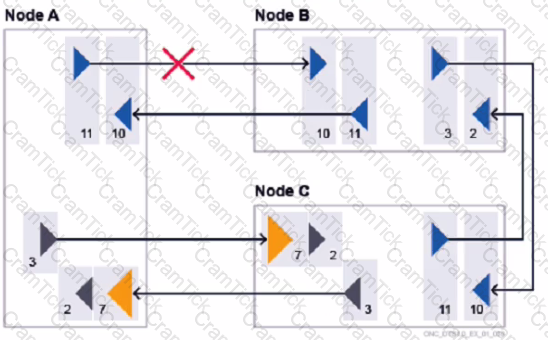When troubleshooting possible generic fiber cuts, the recommended first step is to: 1. Review alarms at nodes where power loss occurs.
What is the next recommended step?
Suppose a "Channel Absent" alarm is reported on an 1830 PSS node. What is the recommended order for the following troubleshooting steps?
On a bidirectional optical amplifier configuration, which of the following are Wavelength Tracker detection points?
Which of the following CLI commands displays a list of the expected and measured output power for the channels whose admin state is up?
Which of the following Performance Measurement (PM) type is NOT typically retrieved at an Optical Transponder (OT) line interface?
Suppose a node is experiencing a little unexpected attenuation over the Optical Supervisory Channel (OSC) transmit direction. Which of the following statements is FALSE?
Which of the following issues can cause a "Loss too low" message to be displayed after a power adjustment has been provided?
Consider the exhibit. A single directional fiber cut is occurring between two amplifiers in bidirectional configuration. Which node(s) will report a "LD Input LOS" alarm?

Which of the following statements best describes the output of the CLI command: show wavekey wtmonitor 1/6/LINE summary?


